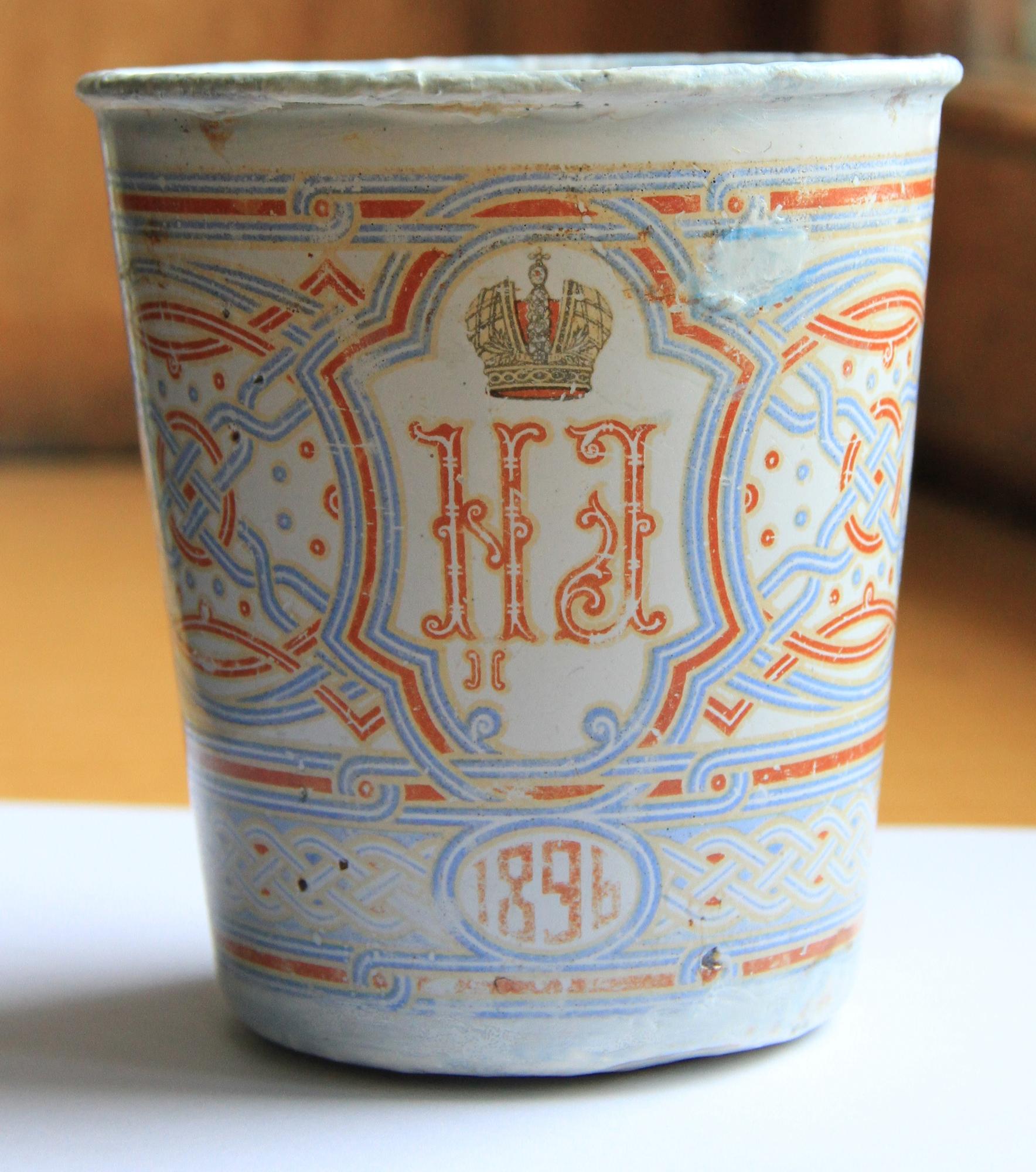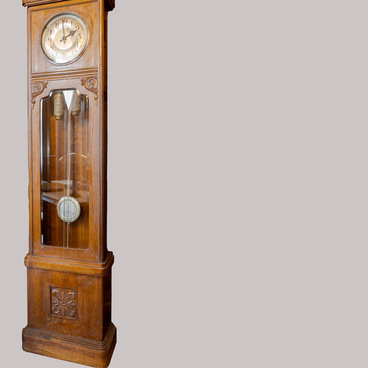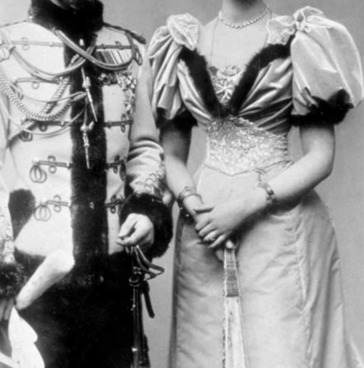Among the exhibits in the study of Nicholas II in the Livadia Palace Museum is a coronation cup created for the day of the holy coronation of Emperor Nicholas II and Empress Alexandra Feodorovna.
The cup has no handle and is of a glass-like cone shape. It is made of tin and covered with enamel. The exterior is decorated with a Russian-style red and blue geometric ornament. A cartouche with a crown on top, framing the letters “N” and “A” (as in Nikolai Alexandrovich — initials of Nikolai II) is located in the center of the ornament. There are gilded rims at the lip and at the base of the cup.
The coronation took place in Moscow on May 14, 1896. A national holiday was scheduled for May 18. According to long-standing Russian tradition, the ascent to the throne of each ruler was accompanied by mass festivities with a rich entertainment program and a traditional offering of royal gifts to the people. Only during coronations did ordinary people have the right to take part in the celebrations alongside representatives of the ruling dynasty and aristocracy. Since the coronation of Alexander II, such holidays for the people were held on the Khodynka field. Long before the festivities began, numerous articles about the upcoming national holiday were published in the newspapers. Advertisements for “royal gifts” were pasted everywhere, consisting of a pound of saika bread, half a pound of sausage, a bag of sweets and nuts weighing three-quarters of a pound, a Vyazma gingerbread and an enameled cup with the monogram of His Imperial Majesty. All these items were packed into a colored cloth with the image of the Kremlin, the State coat of arms and portraits of the Emperor and Empress.
In total, 400 thousand cups were prepared along with gifts for the celebration. “Lovely colorfully painted enamel cups of white and gold and a coat of arms were put on display in many stores. And all the people that have come to Khodynka, came not as much for the festivities, but for getting a hold of these cups, ” wrote the correspondent of “Russkiye Vedomosti” Vladimir Gilyarovsky. The cups could also be purchased in stores in Moscow.
The cup has no handle and is of a glass-like cone shape. It is made of tin and covered with enamel. The exterior is decorated with a Russian-style red and blue geometric ornament. A cartouche with a crown on top, framing the letters “N” and “A” (as in Nikolai Alexandrovich — initials of Nikolai II) is located in the center of the ornament. There are gilded rims at the lip and at the base of the cup.
The coronation took place in Moscow on May 14, 1896. A national holiday was scheduled for May 18. According to long-standing Russian tradition, the ascent to the throne of each ruler was accompanied by mass festivities with a rich entertainment program and a traditional offering of royal gifts to the people. Only during coronations did ordinary people have the right to take part in the celebrations alongside representatives of the ruling dynasty and aristocracy. Since the coronation of Alexander II, such holidays for the people were held on the Khodynka field. Long before the festivities began, numerous articles about the upcoming national holiday were published in the newspapers. Advertisements for “royal gifts” were pasted everywhere, consisting of a pound of saika bread, half a pound of sausage, a bag of sweets and nuts weighing three-quarters of a pound, a Vyazma gingerbread and an enameled cup with the monogram of His Imperial Majesty. All these items were packed into a colored cloth with the image of the Kremlin, the State coat of arms and portraits of the Emperor and Empress.
In total, 400 thousand cups were prepared along with gifts for the celebration. “Lovely colorfully painted enamel cups of white and gold and a coat of arms were put on display in many stores. And all the people that have come to Khodynka, came not as much for the festivities, but for getting a hold of these cups, ” wrote the correspondent of “Russkiye Vedomosti” Vladimir Gilyarovsky. The cups could also be purchased in stores in Moscow.



